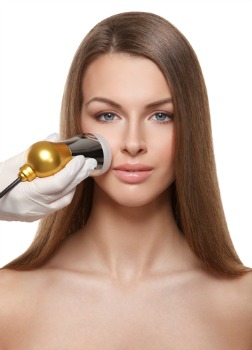
2014-03-04 21:41:57
The Global Technology Based Beauty Market
2014-03-04 21:41:57
By Jacqueline Clarke
|
|
Innovative at-home grooming and beauty devices are emerging as a mega category in the beauty market. Devices are in a sweet spot: skin care and body shaping.
Devices sell themselves because they deliver outcomes that are exponentially superior to the alternatives, that is, manual beauty regimes. As one example, some brushes are marketed as removing “six times” more makeup than hands alone.
At-home devices deliver outcomes that are comparable to expensive treatments that were only available to those who could afford to pay professionals – such as spas or dermatologists. In effect, these devices challenge and undermine medical and professional beauty monopolies.
Face Care Devices Outsell All Others
The bestselling “new to market” devices are the powered facial brushes. They are followed by a mixed bag of microdermabrasion and light based systems.
|
|
Skin brushes outsell other tools because they appeal to every consumer segment – irrespective of gender, age or skin type. In addition brush technology is the most affordable, and the tools are widely available. In the U.S. they are sold in specialist beauty stores, online and on direct sale TV.
Toning set to explode
A rapidly growing device category is “toning” systems. They employ technology originally developed for muscle stimulation and passive exercise.
The toning devices deliver superficial and short term face lifting. The marketing of these devices often features additional benefits such as skin detoxing, and cellular stimulation. Toning results can be seen on the faces of the celebrities who feature at red carpet events.
Trailing at a distance are body shaping devices. But consumer demand is set to explode as these devices become more affordable, and home friendly. Many devices now on sale are not handheld but tabletop units. This is why they are still mainly seen in businesses and not homes. But that will change.
Companies & Brands
The mega brands and companies in global skin care products are now also competing in the device categories. However, companies can enjoy category, but not market dominance — no company leads in more than one category.
One brand Clarisonic (L'Oreal) is the undisputed leader in powered face brushes. It dominates in the premium price category. The standard brush model starts at $150. For now, the many, many competitors tend to be concentrated in the lower priced levels, among them Olay (P&G), Neutrogena, (J&J) and Revlon.
The beauty technology market is becoming ultra fragmented. There are huge numbers of brands. A market complication is the “unknown” brands – many would seem to exist only online. The unknowns are brands whose name appears online but no other information appears or is to be found.
Beauty Devices are a Cultural Fit that Effect a Beauty Revolution
The drivers of this new beauty technology market are both internal (technology level) and external (lifestyle level). Beauty devices are a cultural and lifestyle fit, offering as they do effort-easy convenience, and almost instant results. In contrast, traditional beauty regimes can require the daily application of an anti-aging product (usually creams).
Technology effects a beauty revolution when it replaces the legacy beauty culture of the cosmetics with a beauty culture of results. This orientation is seen when device marketing focuses on outcomes.
The Challenge for Manufacturers
Marketing tends to both oversell and to undersell technology. It oversells when it focuses on the mechanics behind the device. Few beauty consumers can be described as “techies.” They want to know about the beauty solutions the device delivers, and how it is delivered.
The main barrier to sales is the very newness of the technology.
Consumers are aware that they lack the skills to evaluate the technology itself, and many different brands on sale.
This lack of confidence has significant implications: Buyers are more reliant on the online than might be the case with other purchases.
The online is the first information source. Brands' reputations can be done and undone online.
LinkedIn
 Beauty devices are trending.
Beauty devices are trending.




